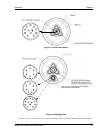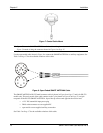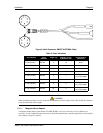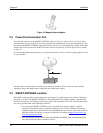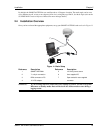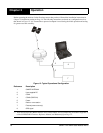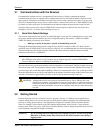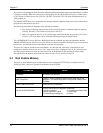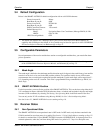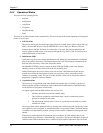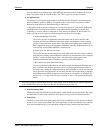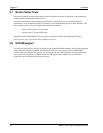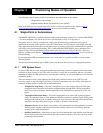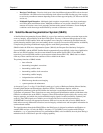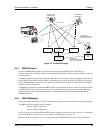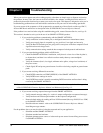
Operation Chapter 3
SMART ANTENNA User Manual Rev 6 23
3.4 Default Configuration
Below is the SMART ANTENNA’s default configuration with no valid NVM elements:
Protocol on port #1: Binary
Baud Rate on port #1: 9600
Protocol on port #2: RTCM-104
Baud Rate on port #2: 9600
DGPS Correction Timeout: 120 seconds
Default Message List:
Binary: Navigation Status User Coordinates (Message ID# 20) @ 1Hz
NMEA: GGA @ 1Hz
1PPS Time Align Mode: OFF
The default data transfer rate is 9600 bps unless your receiver model has Carrier Phase Output (CP)
capability with 19200 bps as the default. A list of models may be found in Appendix A of the SUPERSTAR
II Firmware Reference Manual, see Reference [6] on Page 12.
3.5 Configurable Parameters
Several parameters of the receiver and the base station are configurable and therefore, you must define them
prior to operation.
Your receiver must be a BASE model to act as a base station. A list of models may be found in Appendix A
of the SUPERSTAR II Firmware Reference Manual, see Reference [6] on Page 12.
3.5.1 Mask Angle
The mask angle is defined as the minimum satellite elevation angle (in degrees) above which any given satellite
must be in order for it to be used in the GPS position solution. Low satellites usually do not yield accurate
measurements due to weak signal reception and possible multipath. Typical mask angle values range from 5°-
10°, depending on the receiver’s location. This value is programmable using command Message ID# 81, Set
Mask Angle.
3.5.2 SMART ANTENNA Position
For the base station, you must fix the position of the SMART ANTENNA. This can be done using either the X-
Y-Z coordinates in meters within the WGS-84 reference frame, or latitude and longitude in degrees and height
in meters (LLH coordinates) by selecting Tool Setting | Set Operating Mode in the main menu of StarView.
You can only set the X-Y-Z coordinates using Message ID# 80, Set User’s Position/Operating Mode.
See also Section 2.3, SMART ANTENNA Location starting on Page 18.
3.6 Receiver States
3.6.1 Non-Operational State
The SMART ANTENNA’s non-operational state is OFF mode. In OFF mode, only the data contained in the
NVM is retained for use when power is re-applied. See Section 3.3, Non Volatile Memory starting on Page 22
for details on retained data. If your SMART ANTENNA contains a SUPERSTAR II, its supercap allows it to
maintain ephemeris, other data, and time during OFF mode for a period of 3 -7 days for a hot/quick start.



